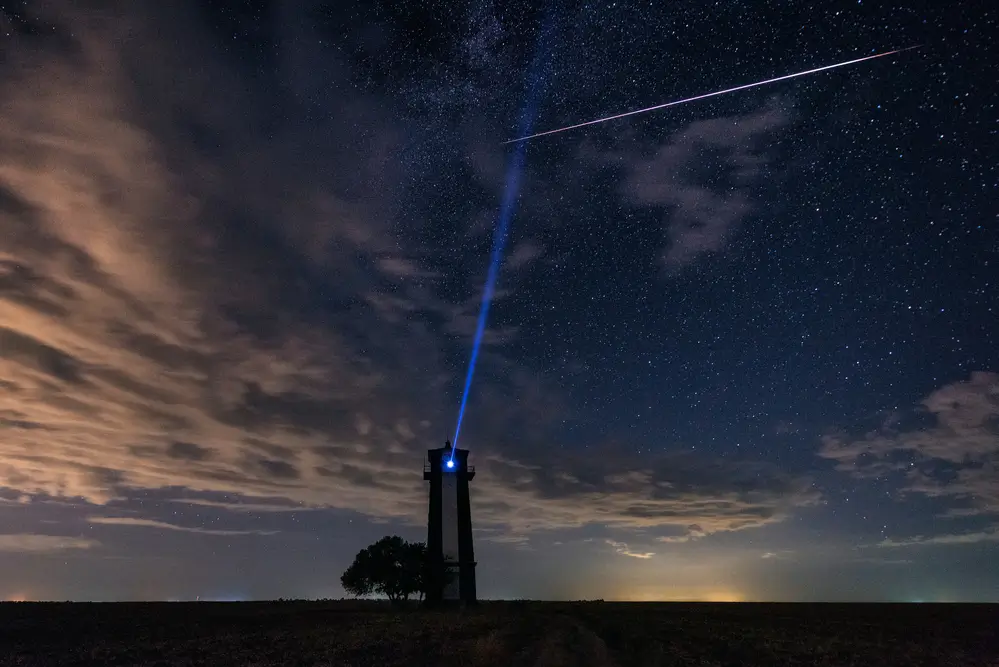
The emergence of Starlink satellites has revolutionized the way we think about global internet connectivity. Spearheaded by SpaceX, this ambitious project aims to blanket the Earth with high-speed internet through a constellation of low Earth orbit (LEO) satellites. This article explores the technology behind Starlink satellites, their deployment process, how to track them in the sky, and the impact they are having on global communication.
Understanding Starlink Satellites
Starlink satellites are part of a large network designed to provide high-speed, low-latency internet access to even the most remote corners of the world. These satellites operate in low Earth orbit, approximately 550 kilometers above the planet, allowing them to deliver faster and more reliable internet service compared to traditional satellites.
Key Features of Starlink Satellites:
- Low Latency: Operating at a lower orbit reduces signal travel time, resulting in latencies as low as 20 ms.
- High Throughput: Equipped with phased-array antennas, Starlink satellites offer high data transfer rates.
- Inter-Satellite Communication: Laser links enable satellites to communicate with each other, minimizing reliance on ground stations and enhancing global coverage.
Deployment and Visibility of Starlink Satellites in the Sky
SpaceX has a strategic approach to deploying Starlink satellites, launching them in batches of 60 using Falcon 9 rockets. As of mid-2024, over 4,500 Starlink satellites have been deployed, with plans to increase this number to around 12,000 and potentially up to 42,000.
Seeing Starlink Satellites in the Sky:
- Frequent Launches: With launches occurring approximately every two weeks, Starlink satellites are a common sight in the night sky.
- Satellite Trains: Shortly after launch, the satellites often appear in a train-like formation, which can be visible to the naked eye under the right conditions.
- Reflectivity: Efforts are being made to reduce the reflectivity of Starlink satellites to minimize their impact on astronomical observations.
Tracking Starlink Satellites
For enthusiasts and curious observers, tracking Starlink satellites has become a popular activity. Several online tools and apps allow you to find out when and where to see Starlink satellites.
Popular Starlink Satellites Trackers:
- Heavens-Above: Provides real-time tracking of Starlink satellites, including their current position and upcoming passes.
- FindStarlink.com: Allows users to enter their location and see when Starlink satellites will be visible.
- N2YO.com: Offers detailed tracking information and live maps of Starlink satellites.
For more information on how to keep up with Starlink satellites in the sky, check out our comprehensive guide on Starlink Satellite Tracker: Keeping Up with the Sky.
What Time Are the Starlink Satellites Tonight?
To determine the best time to view Starlink satellites tonight, you can use various satellite tracking tools mentioned above. These platforms allow you to input your location and receive precise times for when the satellites will be visible. Typically, the best viewing times are shortly after sunset or just before sunrise when the satellites are illuminated by the sun but the ground is dark.
The Impact of Starlink on Global Connectivity
Starlink’s extensive satellite network has far-reaching implications for global internet access.
Economic Development:
- Bridging the Digital Divide: By providing high-speed internet to underserved areas, Starlink helps foster economic growth and improve quality of life.
- Supporting Businesses: Reliable internet access enables businesses in remote regions to connect with global markets and improve efficiency.
Education:
- Access to Information: Starlink empowers students in rural areas with access to online educational resources.
- E-Learning: The low-latency internet supports e-learning platforms, ensuring uninterrupted virtual classes.
Healthcare:
- Telemedicine: Starlink’s connectivity facilitates telemedicine services, allowing remote areas to access healthcare consultations.
- Data Sharing: High-speed internet enables efficient sharing of medical data and research.
Emergency Response:
- Disaster Recovery: Starlink provides crucial connectivity in disaster-stricken areas where traditional communication infrastructure is damaged.
- Coordination: Reliable internet supports emergency response teams in coordinating rescue and relief efforts.
The Future of Starlink
SpaceX is continuously innovating and expanding the Starlink network with several ambitious plans on the horizon.
- Increased Satellite Capacity: Aiming to deploy up to 42,000 satellites, Starlink plans to enhance coverage and service quality.
- Enhanced User Experience: Advancements in satellite technology and ground infrastructure are expected to further reduce latency and increase data transfer speeds.
- Global Roaming: Future plans include introducing global roaming capabilities, allowing users to access high-speed internet from anywhere.
Conclusion
Starlink satellites are not only transforming global internet connectivity but also creating a new spectacle in the night sky. With advanced technology, strategic deployment, and tools for tracking their movements, Starlink is bridging the digital divide and bringing high-speed internet to the most remote areas. As the constellation grows, it promises to enhance economic development, education, healthcare, and emergency response worldwide.
FAQs
- How can I track Starlink satellites in the sky? You can use online tools like Heavens-Above, FindStarlink.com, and N2YO.com to track the current position and visibility times of Starlink satellites based on your location.
- What time are the Starlink satellites visible tonight? The visibility times vary based on your location. Using satellite tracking websites or apps, you can find precise times for when Starlink satellites will be visible in your area.
- Why do Starlink satellites appear in a train-like formation? After a launch, Starlink satellites often travel closely together in a line before spreading out into their designated orbits. This formation is commonly referred to as a satellite train.
- How does Starlink reduce satellite reflectivity? SpaceX has implemented measures such as “darkening” treatments on satellite surfaces and sun visors to reduce their reflectivity and minimize their impact on astronomical observations.
- What speeds can I expect from Starlink internet? Users can typically expect download speeds between 100 Mbps and 200 Mbps, with ongoing improvements as more satellites are deployed and technology advances.


